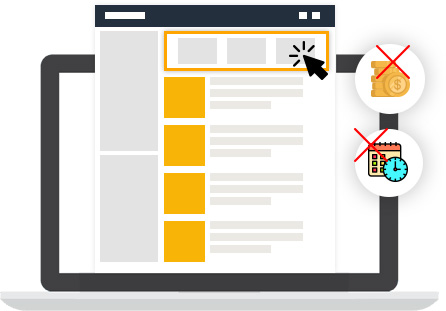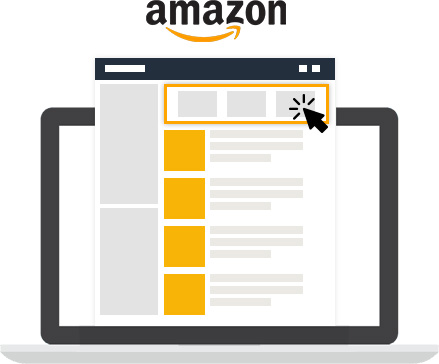Amazon FBA and PAN EU
Amazon as a 3PL

Amazon FBA is…
Just so we’re all on the same page, FBA stands for, Fulfilment By Amazon. It’s essentially a 3rd Party Logistics (3PL) solution comprised of a large network of warehouses and courier solutions, all connected to Amazon’s marketplace.
More than that, Amazon can fulfil orders from your own website, other Marketplaces and can offer these services on a global scale (more about that later).
Amazon can manage pretty much all aspects including things like Customer Service, returns, packaging, gift-wrapping etc.
If you’ve not looked into their pricing, it’s actually very competitive and may even work out cheaper than your current solution.
Prime Enabled
Aside from the obvious logistics headache for sellers, FBA comes with the added benefit for Marketplace sellers that products delivered by Amazon get the Prime badge.
For those who’ve been living on the moon for the last few years, Prime is Amazon’s subscription service that, at the end of 2019, boasted over 150 million users. Simply having the Prime badge on your products will generally boost sales by 30-50%!
For this reason, even if you have a super-slick logistics operation of your own, you may want to also put products into FBA. Having both FBA and FBM versions of the same product can be a good strategy. Your FBA version will get the Buy Box and sell first but, should you sell out, you always have a back up version to still pick up sales.


No CS or Refund hassles
The problem with selling stuff to the general public is that they tend to ask you things. Does this come in red? How do I return something? Does my bum look big in this? (OK, maybe not the last one, but you get the point.)
With Amazon shipped products, these questions are handled by Amazon directly so, in theory, you can just sit back and watch the sales roll in. All you need to worry about is keeping them from running out of stock and Amazon will handle the rest.
Perhaps we’re overselling a little here. Detailed questions about the product may still come to you but you get the gist.
You do need to tell Amazon what to do with returned items (destroy, return etc.) and nothing Amazon does comes for free but returns are mostly taken care of with payments and refunds are all handled by Amazon directly.
FBA Perks
Prime badge!
Metric Protection
No CS Hassles
No CS Hassles

Amazon PAN EU is…
Designed to help sellers reach a wider audience, Pan-EU FBA joins all of Amazons European warehouses together into a single network.
You ship stock to your nearest Amazon warehouse and they then load-balance it across Europe based on the calculated demand. This means you get the Prime badge in all European territories.
Pretty neat but you do need to be tax registered in all 7 countries where Amazon holds stock: as well as the big 5 EU economies, this includes Poland and the Czech Republic.
If that’s problematic, there are a couple of alternative acronyms that may be of more interest:
EFN: Amazon’s European Fulfilment Network means that stock you store in one country is available to be shipped across Europe. There is a per shipping surcharge and delivery takes a little longer but you still get the Prime badge and it does mean you can limit inventory to a single stock pool.
MCI: Multi-Country Inventory allows you to ship you products to any fulfilment centre across Europe directly. You get the 1 day Prime badge and avoid the individual surcharge that you get with EFN but you will have more locations to keep stocked.
Shipping Overseas Ease
It can be challenging when selling in overseas territories: you’re trying to compete with native sellers who may be able to ship things faster and cheaper to local buyers.
FBA can be a real leveller: you get the same Prime badge on your listings; your costs are the same as every other seller using FBA; and Amazon will provide localised customer service so, as long as you translate your listings, the only difference will be your price.
For selling through FBA beyond Europe, you generally have two options:
Use FBA Export: While EFN items need to be enabled on each individual country site, FBA Export enables overseas buyers to purchase products listed on your local site.
Ship to a local fulfilment centre: Since we’re mostly talking about the US, that should probably be spelled, “fulfillment center”. Amazon won’t ship EU stock to a US fulfillment center so you will need to organise that yourself but, once there, you get the Prime badge and access to the single biggest market in the world.


Localised Stock when you need it
You could build yourself a network of warehouses around Europe. This does have the advantage of opening up more channels (Amazon FBA is not great for other marketplaces and channels and may even be disallowed).
The down-side is that you would need to hold stock in numerous countries meaning you will need more stock overall. In addition, whichever provider you choose would need to be Amazon certified if you want to retain the Prime badge (SFP: Seller-Fulfilled Prime is where sellers can ship from their own warehouse and still retain the Prime badge).
There are scenarios where this is the best option so you should consider each option carefully. Price, service and the likely impact on sales should all pay a part.
It can be a little daunting but we can help you navigate the complexities to work out the best solutions for your business.
